Behind our beloved Peruvian Food lie essential ingredients that add color, body, and flavor to every dish. These tiny, but extremely aromatic ingredients are not only for seasoning but also good for your health. Peru’s spice pallet is vast and diversified, with each spice presenting a unique tale.
From the aromatic Huacatay to the spicy rocoto, we will teach you everything you need to know about Peruvian spices. Let’s learn more about the spirit of one of the world’s best cuisines through Peru’s vivid spices, and how they transform simple dishes into gourmet masterpieces. However, we’ll first see the cultural importance of these products, so let’s go!
Use of Spices in Peruvian Food
Cooking is a cherished tradition that connects Peruvians across generations. Because of the taste and aroma of food, Peruvians have vivid memories of all the meals they have had with their loved ones. Our seasonings are more than just ingredients.
We can say that they add a little bit of magic to our dishes, bringing out wonderful flavors. Spices truly capture the essence of Peruvian seasonings, as our cuisine’s rich and unique flavors come from how we season our food.
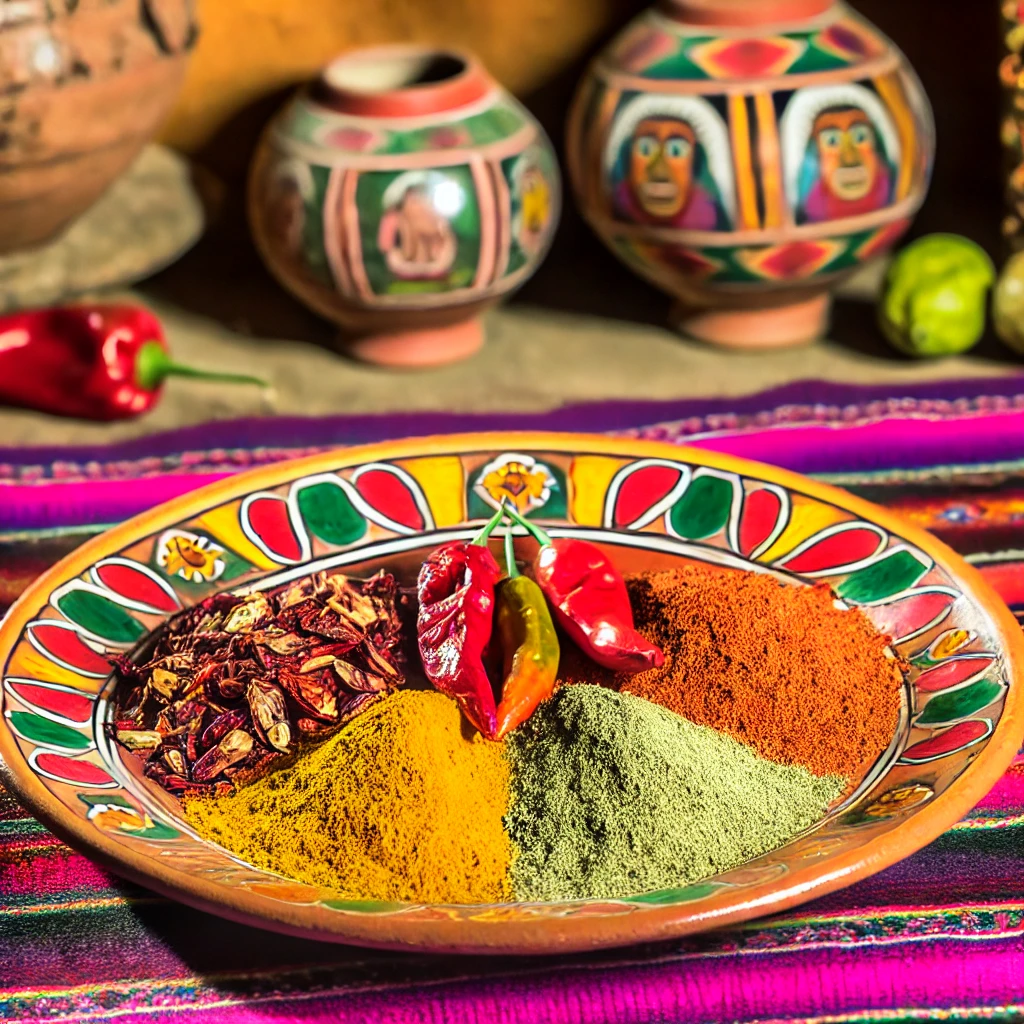
These special blends not only enhance the taste but also brighten the colors of our meals. What makes Peruvian seasonings truly special is that many of them are unique to our country. That’s why both tourists and Peruvians living abroad often say there’s nothing quite like food from Peru.
Thanks to these unique characteristics, we’ve also seen the rise of simpler versions of our seasonings. This makes it easier for home cooks to enjoy the rich flavors of Peruvian cuisine in their everyday meals.
Aji
In Peru, chili is known as “ají” and has been cultivated for more than 6,000 years. According to Inca Garcilaso de la Vega, a “half-blood Spanish-Peruvian writer, who wrote “Comentarios Reales de los Incas” in 1609, It was a long-standing tradition among Peruvians to cover almost everything in “uchu,” or hot sauce in Quechua, the language of the Incas.
The Incas believed that these chili peppers were as valuable as gold, even though Peru had an abundance of it. Their soldiers couldn’t hunt or fight without having consumed ají. Ají has a high capsaicin content and is extremely rich in vitamins A, B, and C.

If you don’t know (like us before writing this article), Capsaicin is a component that boosts energy and releases endorphins. Peruvian cuisine uses roughly 350 different varieties, whether they are pickled, dried, or fresh. Some of them are grown in the Andes and others in the Amazon.
One staple of Peruvian cuisine is aji, with an average Peruvian consuming roughly 5 kg of chiles each year. We might claim that we adore Aji to the point that the “Day of Peruvian Chilies” is celebrated on the first Friday of September each year. Now, let’s see a list of Peruvians’ favorite chilis:

Ají Pipi de Mono
Known as “Monkey little d**k”, originated in Peru’s lush woods, and is famous for its extraordinary flavor and intensity. This uncommon chili cultivar grows in the central Peruvian Rainforest.

Ají Panca
Is a somewhat hot chile with a rich flavor. Its smokey, fruity flavor makes it ideal for marinades, rice dishes, soups, and sauces. It can be used fresh, dried, ground, or in a paste. When dried in the sun, it changes from a dark red color to a rich chocolate brown.
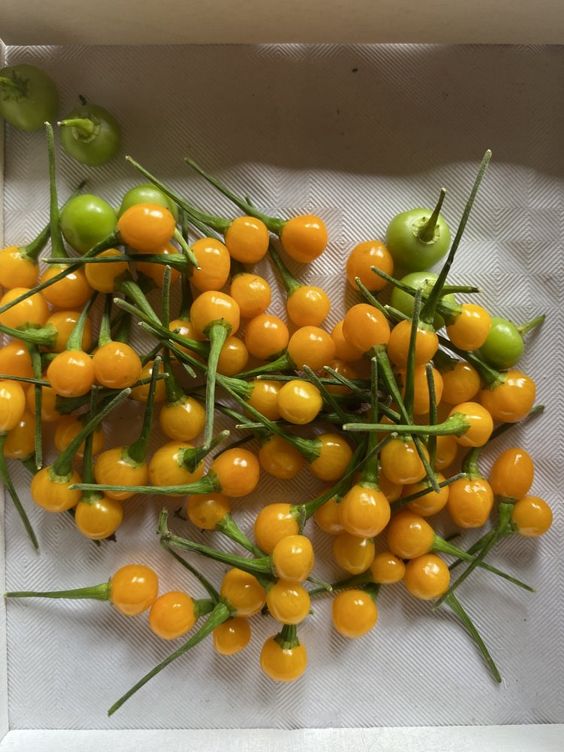
Aji Charapita
This unique chili is a rare find that only grows in the northern jungle. It has a fruity taste and can be enjoyed dried, preserved, or pickled. It is very spicy, and eating it fresh can be quite intense!
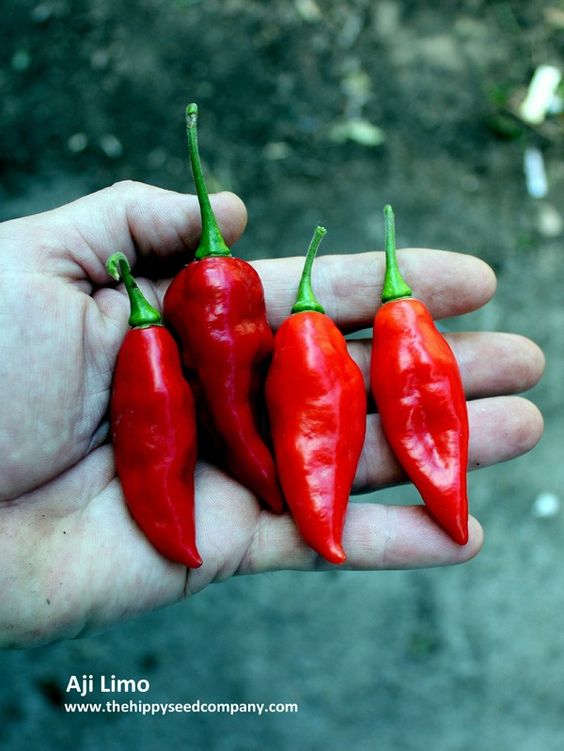
Ají Limo
This little spicy pepper is extremely versatile, available in a variety of shapes and colors including yellow, green, orange, red, and purple. It adds a delicious spice to meals! Ají limos pair perfectly with ceviche, emphasizing their distinct flavor characteristic. Enjoy experiencing their vivid flavors!
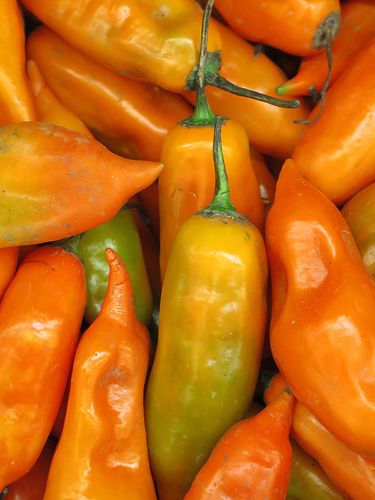
Aji Amarillo
We have the best for the end, as this chili is truly the star of Peruvian chilies. It offers a delightful mix of spice, fruitiness, vibrant color, and creamy texture. This chili is widely loved in Peru and plays a key role in many traditional dishes, such as aji de gallina. When mature, it has a beautiful yellowish-orange color.
Huacatay
The Huacatay or Peruvian black mint is a wonderful herb that brings joy to Peruvian cuisine. Huacatay has a unique flavor that combines the freshness of basil and mint, making it a great addition to many traditional Peruvian dishes, such as arroz con pollo, ocopa sauce, or chopped and sprinkled in lomo saltado.
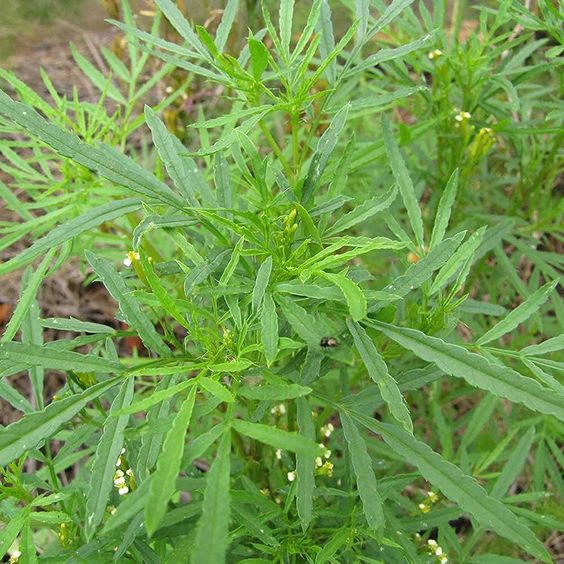
Huacatay can also be used in soups, salads, or even stews. You can find Huacatay growing in homes across Peru and the Andes. Besides its culinary uses, it’s also used in perfumes, pest repellents, and essential oils. Peruvians can enjoy huacatay in teas, thanks to its helpful properties for reducing inflammation and easing colds.
Achiote
Achiote, also known as “annato” is a wonderful plant that comes from a common shrub in the Americas. This plant has a unique red-yellow pigment and is often used in food and cosmetics. There are many delicious ways to enjoy achiote in meals.
In Peru, achiote is a popular ingredient in many dishes, adding a special flavor and unique essence while providing health benefits. Annatto is used in “salchicha huachana” a Peruvian sausage, in “puca picante” or other dishes to add flavor and color.
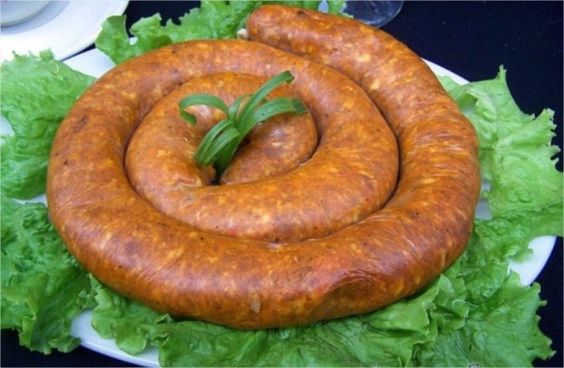
Although it may not be well-known worldwide yet, achiote’s popularity is growing. Its impressive health benefits and nutritional uses make it a great addition to your meals. Pairing it with other healthy foods can really boost your wellness journey!
Chincho
This spice is an aromatic herbaceous plant native to Peru, with a high concentration in the Andes, particularly in the Huánuco region. This herb has a branching, erect stem, pinnate leaves with elongated, serrated leaflets, and can reach a height of 2 meters.
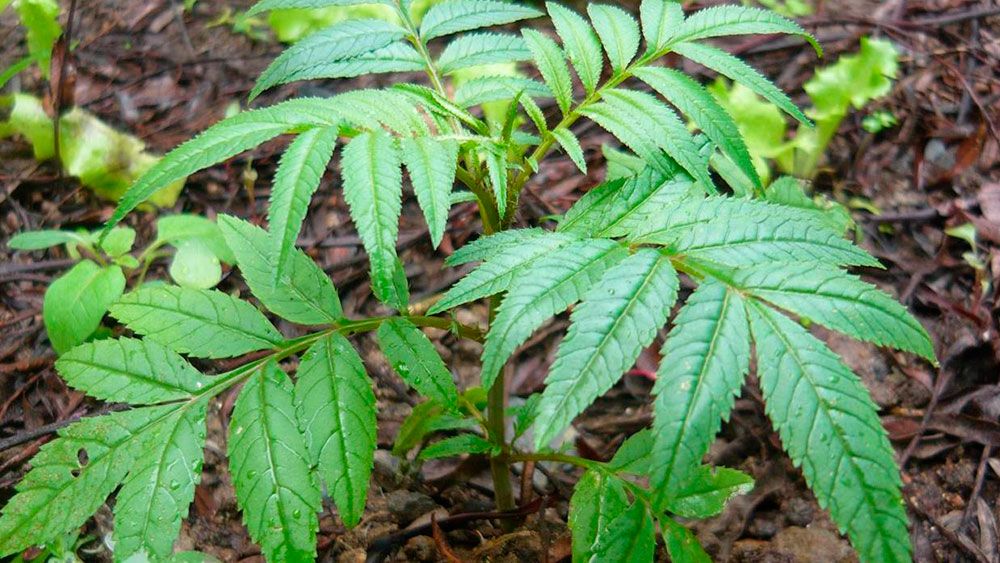
Chincho, which has been grown by the Incas for millennia, is used in traditional dishes like pachamanca and cuy, or guinea pig-related dishes. It’s prized for its sweet, pungent aroma, furthermore, chincho’s oil is good for aromatherapy and insect repellent. Despite its culinary and therapeutic benefits, chincho is not widely available outside of Peru.
Rocoto
Another root vegetable similar to aji, rocoto is a key ingredient in Peruvian cooking. This wonderful chili pepper from Peru is known for its strong heat and a hint of sweetness. People sometimes mix it up with red pepper, but Rocoto is much spicier!
“Rocoto,” along with lime juice and Peruvian red onions are the key to a great ceviche. “Rocoto Relleno”, also called stuffed rocoto, is another delicious dish where the rocoto has a key role. You must try the “rocoto sauce,” a mix of rocoto and other spices that create the perfect sauce for your Peruvian favorite dishes.
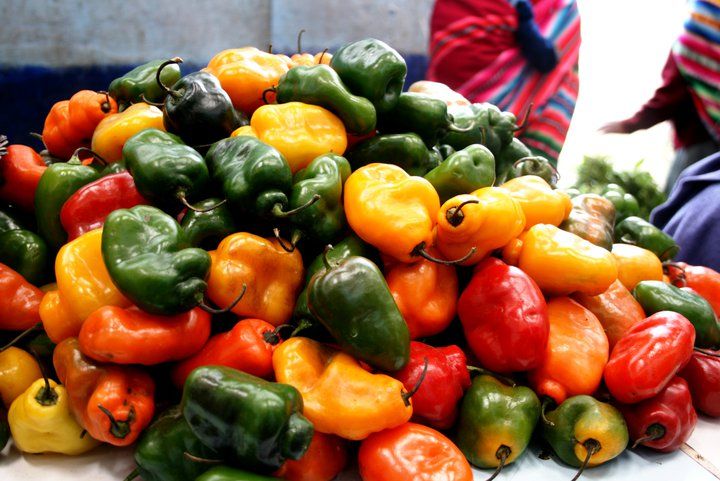
This unique pepper has a rich history, dating back about 5,000 years to the time before the Inca civilization, with its roots found in the Guitarreros caves. Ancient cultures like the Paracas and Nazca documented it, and today, it proudly represents Peru’s culinary heritage. The best places to grow Rocoto are in the eastern Andes, especially in regions like Oxapampa-Pasco, Arequipa, etc.
Our spices are tiny parts of our culture, tradition, and food, and we hope that you can enjoy them in all of their forms on your trip to Peru. We encourage you to try Viagens Machu Picchu on your Peruvian trip. Take a look at our destinations or contact our experts to get more info!
Viagens Machu Picchu, journeys that inspire, moments that last.
| Español > Viagens Machu Picchu |
| English >Viagens Machu Picchu |
| Portugués > Viagens Machu Picchu |

